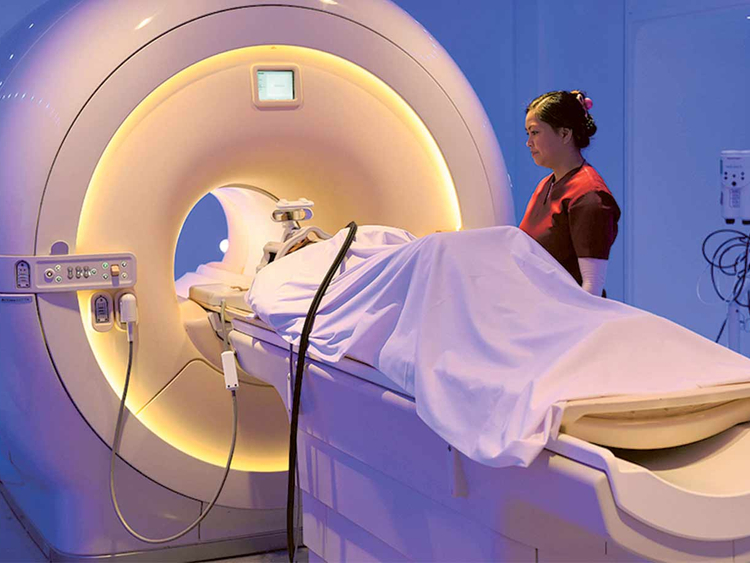“If I have cancer, will I die?” As an oncologist, it’s both interesting and poignant to know that this is one of the most common answers people seek from Google. Dispensing with the obvious, “Everyone must die”, the answer I hope Google would give is: “Tell me more.” Google should ask for not just the type of cancer but the colour of your skin, the language you speak, how much you earn, what country you live in, the distance to the nearest cancer centre, and crucially, if you are married.
In the developed world, cancer survival rates are increasing. An Australian patient diagnosed with cancer today has a 67 per cent chance of being alive in five years. Cancer Research UK states that cancer survival rates in the UK have doubled from 24 per cent to 50 per cent in the past 40 years.
A recent American Cancer Society report calculates five-year survival for all cancers as having risen from 49 per cent to 69 per cent in the past 40 years. If you have survived the first five years, the chance of long-term survival is increasingly optimistic, more than 90% for all cancers combined. These improved outcomes are attributed to early diagnosis and better treatments.
Modern chemotherapy and radiotherapy regimens are unrecognisable compared to earlier decades. The march of immunotherapy continues, with new drugs able to delay cancer progression and extend survival in traditionally bleak scenarios including melanoma and lung and bladder cancer.
We now know that cancer is actually many different diseases, cancer cells are extraordinarily smart at outwitting the body’s defences, and a reasonable goal ought to be keeping cancer patients better for longer rather than expecting to banish cancer altogether.
Amid the high survival rates for common cancers such as bowel, breast and prostate, detected early, the outcomes for brain, pancreas and stomach cancers remain dismal, with most patients expected to live for only a few years
But apart from tumour biology, what else affects survival? Being male, an ethnic minority and being non-English speaking confers poorer outcomes as does social disadvantage, illiteracy, poverty and living far away from the full suite of services that modern treatment demands. The disparities in cancer outcomes based on the socioeconomic gradient are significant and sadly familiar to every oncologist, who nonetheless spend most of their time prescribing drugs because this is what they feel best equipped for.
Interestingly, marriage (but not living with a friend or a child) conveys a consistent and substantial impact on cancer detection, outcome and survival. Married people seek earlier attention for concerning symptoms, are more compliant with treatment, and die with greater psychological support. Married men benefit somewhat more than women but in the case of five common cancers, the overall impact is greater than published results of chemotherapy, leading the Journal of Clinical Oncology to state baldly: “Marriage is as protective as chemotherapy.”
It’s fair to say that if you are a cancer patient lucky enough to live in the rich world, you can be increasingly optimistic about your chances all along the continuum of cancer care, from diagnosis to terminal care. But what if a person living in a poorer country asks the same question? Unfortunately, the answer is more likely to be a straightforward: “Yes, you will die.”
There are 14 million new diagnoses and eight million cancer deaths each year. A staggering 70 per cent of deaths happen in Africa, Asia and Central and South America .
Poverty, poor governance, inadequate infrastructure and scarce specialists all play a role. Many countries have pockets of excellence but there is no comprehensive and easily accessible programme of cancer education, screening, treatment and palliative care.
Globally 20 per cent of cancers are related to tobacco, the use of which remains common, cheap and unregulated. Another 20 per cent are attributed to vaccine-preventable infections such as Hepatitis B and C and the human papillomavirus. Patients suffer from the twin curse of living in cancer-promoting environments and lack of access to help when they need it.
But even if one took the sanguine view that everyone must die of something, it is the abject state of palliative care that should jolt us from complacency. While we may be occupied by opioid abuse, access to morphine remains a pipedream for most people around the world. Fully 90 per cent of the world’s morphine is used by patients in the US, Canada, Europe and Australia.
Meanwhile, the vast majority of cancer presentations in developing countries are with advanced disease, where effective palliative care is not only the most practical but also the most compassionate intervention. But oncologists there have stories, such as the dying patient with a bleeding, infected and painful cancer who has travelled hundreds of kilometres in search of pain relief only to be sent home with paracetamol or ibuprofen, or nothing at all.
Morphine is arguably the cheapest and most effective drug for palliation and is on the World Health Organisation’s list of essential medications but due to health illiteracy, stigma, misguided fears and misinformed government policy, dying with dignity is no more than an aspiration for most patients around the world.
As an oncologist, I am regularly humbled by patients’ disclosure that they lost track of everything else I said after the word “cancer”. Treatable or not, the very encounter permanently alters the lives of those who suffer and those who must watch on. No one, no matter where in the world, is “lucky” to develop cancer, but the next time you turn to Google and ask “If I have cancer, will I die?”, it may help to know what a loaded question it really is.
— Guardian News & Media Ltd, 2016
Dr. Ranjana Srivastava is an Australian oncologist, a Fulbright scholar and an award-winning author. Her latest book is After Cancer: A Guide to Living Well.













